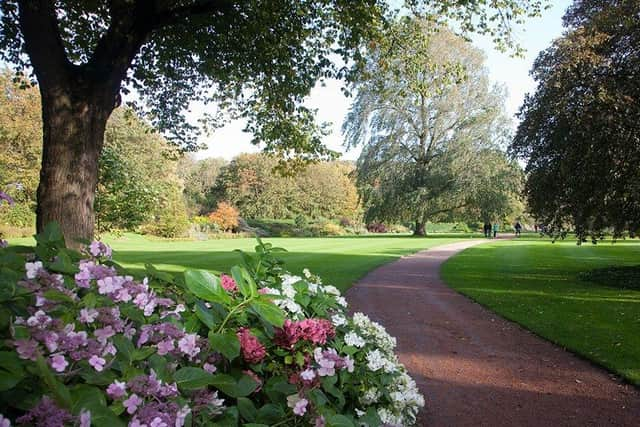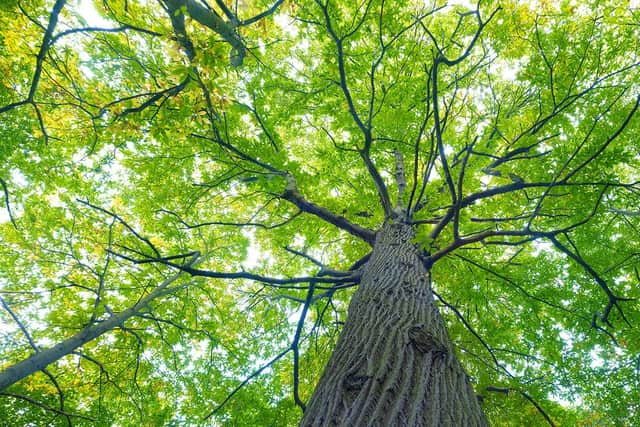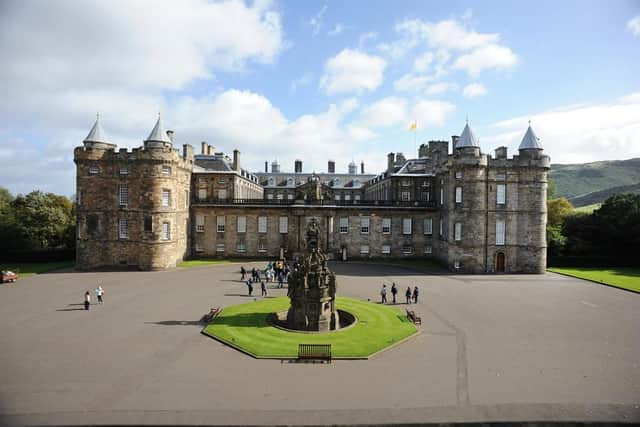Timber... Elm tree in the Queen's Edinburgh palace garden' faces the axe over danger fears
and live on Freeview channel 276
Let us know what you think and join the conversation at the bottom of this article
Expert tree surgeons have determined that the elm, situated in the north garden of the sprawling Palace of Holyrood estate, has fallen victim to ‘widespread and advanced decay’ - made more dangerous by its location in a ‘high risk and busy area’ of the gardens.
The garden is used by the Queen to entertain around 8,000 guests every year at the palace, and Scottish residents who have been recognised in the biannual Honours List receive their awards in the estate’s Great Gallery.


Advertisement
Hide AdAdvertisement
Hide AdNow, Historic Environment Scotland (HES) has applied to Edinburgh City Council to cut down the embattled Elm.
A report, commissioned by HES and produced by Hamilton-based firm Informed Tree Services, reads: “Tree 342 is a mature wych elm (Ulmus glabra).
“This 25 metre tall tree arises from the southern edge of a small woodland block, within the gated grounds of the Palace of Holyroodhouse.


“Tree 342 is unsuitable for even short-term retention. It should be removed to near ground level within 6 months.
Advertisement
Hide AdAdvertisement
Hide Ad“I have rarely, if ever, seen such widespread and advanced decay at the base of a vigorous mature tree.
“I was so surprised at the results of the first reading (at 100mm above ground) that I took a second reading (at 500mm) to verify the first. The second reading, again, showed advanced and widespread decay.
“The previous tree inspector should be commended for noting the external signs of significant internal decay and for recommending further investigation.


“However, they also went on to recommend a crown reduction. Unfortunately, I feel a crown reduction would not adequately control the risks posed by tree 342.
Advertisement
Hide AdAdvertisement
Hide Ad“The reduction pruning would cause, quite severe, physiological stress and would, therefore, simply favour the development of the butt rot fungus. Tree 342 would become a more susceptible host.”
The report further highlights a specialist tomograph image of the tree, ‘clearly showing that a tree of several tonnes is being held aloft by two thin strips of intact wood, to the north and south-east.”
A spokesperson for HES said: "Concerns were raised about the health of the tree during our annual survey and we followed this with specialist testing to assess the extent of the identified decay, hoping to save the tree and monitor it annually.
"Unfortunately, the decay was extensive and advanced, with only two pillars of intact wood remaining and supporting the whole tree.
Advertisement
Hide AdAdvertisement
Hide Ad"As the tree is situated in a high risk and busy area, we have had to take the difficult decision to fell the tree for safety reasons."
A message from the Editor:
Thank you for reading this article. We're more reliant on your support than ever as the shift in consumer habits brought about by coronavirus impacts our advertisers.
If you haven't already, please consider supporting our trusted, fact-checked journalism by taking out a digital subscription.
Comment Guidelines
National World encourages reader discussion on our stories. User feedback, insights and back-and-forth exchanges add a rich layer of context to reporting. Please review our Community Guidelines before commenting.